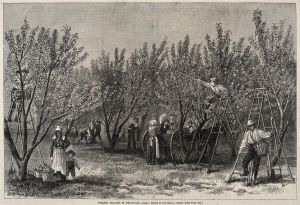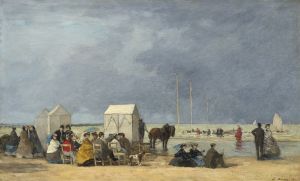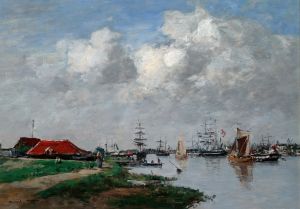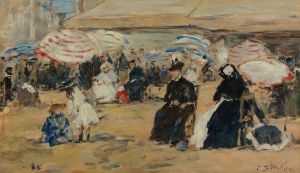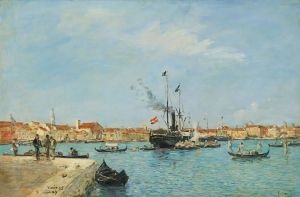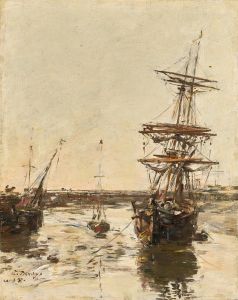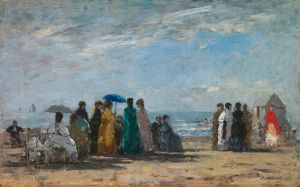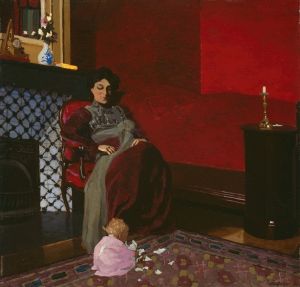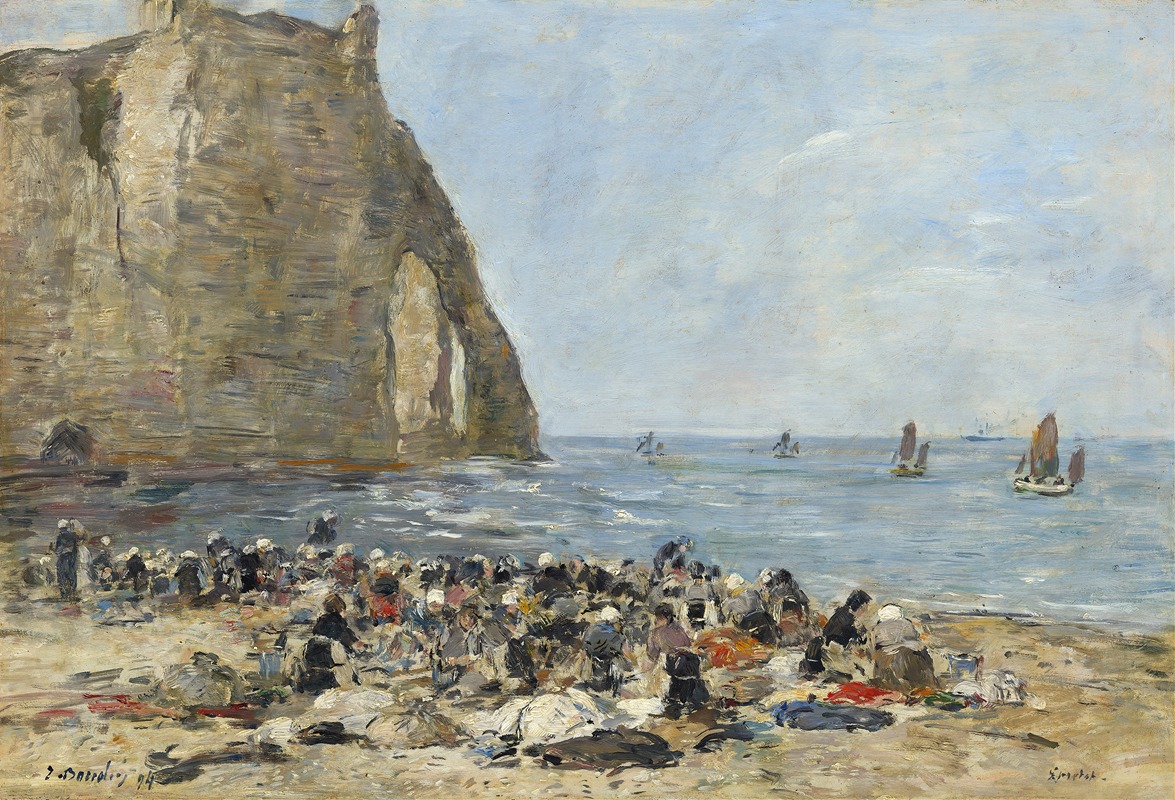
Washerwomen on the Beach of Etretat
A hand-painted replica of Eugène Boudin’s masterpiece Washerwomen on the Beach of Etretat, meticulously crafted by professional artists to capture the true essence of the original. Each piece is created with museum-quality canvas and rare mineral pigments, carefully painted by experienced artists with delicate brushstrokes and rich, layered colors to perfectly recreate the texture of the original artwork. Unlike machine-printed reproductions, this hand-painted version brings the painting to life, infused with the artist’s emotions and skill in every stroke. Whether for personal collection or home decoration, it instantly elevates the artistic atmosphere of any space.
"Washerwomen on the Beach of Étretat" is an oil painting by the French artist Eugène Boudin, completed in 1894. Boudin is renowned for his seascapes and beach scenes, and this particular work exemplifies his skill in capturing the nuances of light and atmosphere. The painting depicts a group of washerwomen engaged in their daily labor on the beach at Étretat, a coastal town in the Normandy region of France.
Boudin was born in Honfleur, Normandy, in 1824, and he developed a profound connection with the coastal landscapes of his native region. His early exposure to the sea and the bustling activity of the ports influenced his artistic focus. Boudin is often credited as a precursor to the Impressionist movement, and his plein air painting technique was instrumental in shaping the approaches of later Impressionist artists.
The beach at Étretat, with its dramatic cliffs and expansive views, was a popular subject for artists in the 19th century. Boudin's choice of this location reflects his interest in capturing the everyday life of the region's inhabitants. In "Washerwomen on the Beach of Étretat," he portrays the women in the midst of their work, surrounded by the natural beauty of the coastline. The composition is characterized by its attention to detail and the subtle interplay of light and shadow, which are hallmarks of Boudin's style.
Boudin's technique involved painting directly from nature, which allowed him to capture the transient effects of light and weather with remarkable fidelity. In this painting, the sky is rendered with soft, diffused clouds, and the sea is depicted with gentle waves lapping against the shore. The washerwomen are shown in various poses, their figures integrated into the landscape in a way that emphasizes their connection to the environment.
The painting is notable for its muted color palette, which enhances the sense of realism and immediacy. Boudin's use of color and brushwork conveys the textures of the sand, water, and clothing, creating a vivid impression of the scene. His ability to depict the subtleties of natural light is evident in the way the sunlight filters through the clouds and reflects off the water.
"Washerwomen on the Beach of Étretat" is a testament to Boudin's mastery of capturing the essence of coastal life. His work had a significant influence on the Impressionists, particularly Claude Monet, who admired Boudin's dedication to painting en plein air and his ability to convey the atmosphere of a scene. Boudin's paintings are celebrated for their authenticity and their ability to transport viewers to the serene and picturesque settings of 19th-century Normandy.
Today, Eugène Boudin's works are held in high regard and can be found in major art collections around the world. "Washerwomen on the Beach of Étretat" remains an exemplary piece that highlights Boudin's contribution to the development of modern landscape painting and his role in the transition from traditional to Impressionist art.









